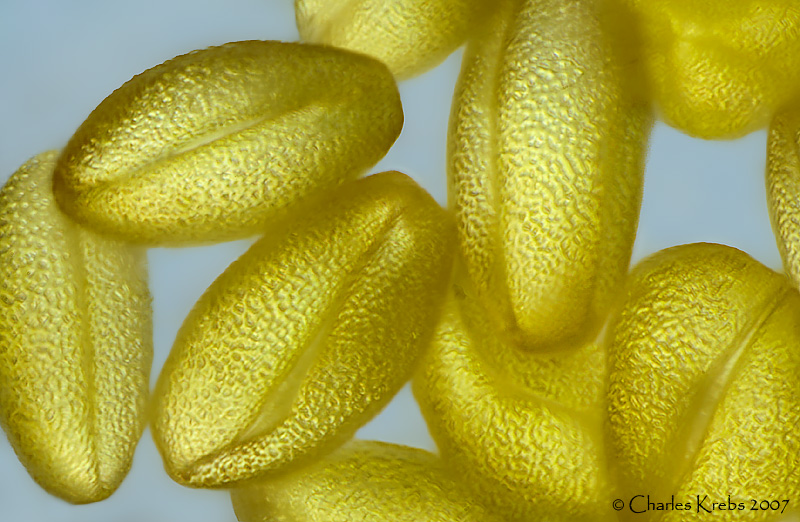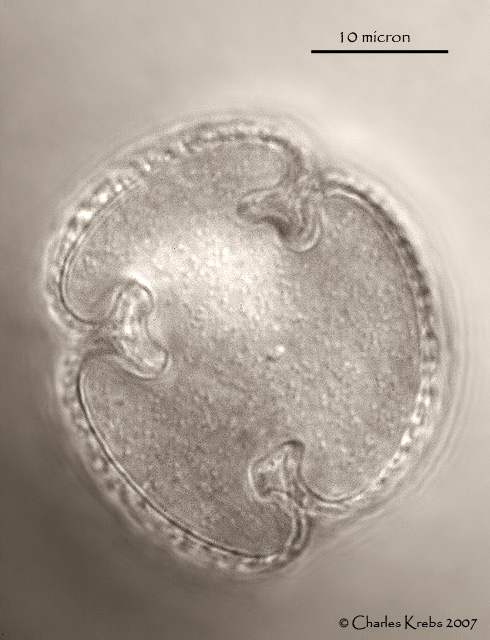The top shot is "dry", from a stack of 22 made with the 40X objective.
The second shot (converted to b+w) is most helpful to understand the shape clearly. It is an "optical section", a cross section of a pollen grain that is standing on one end. Taken with the 100X and looking through the end to about the midpoint, it is clear how the grooves seen in the top image continue inward and flare out into heart shaped channels.
These pollen grains averaged about 30 micron in diameter with a length of about 55-60 micron.




